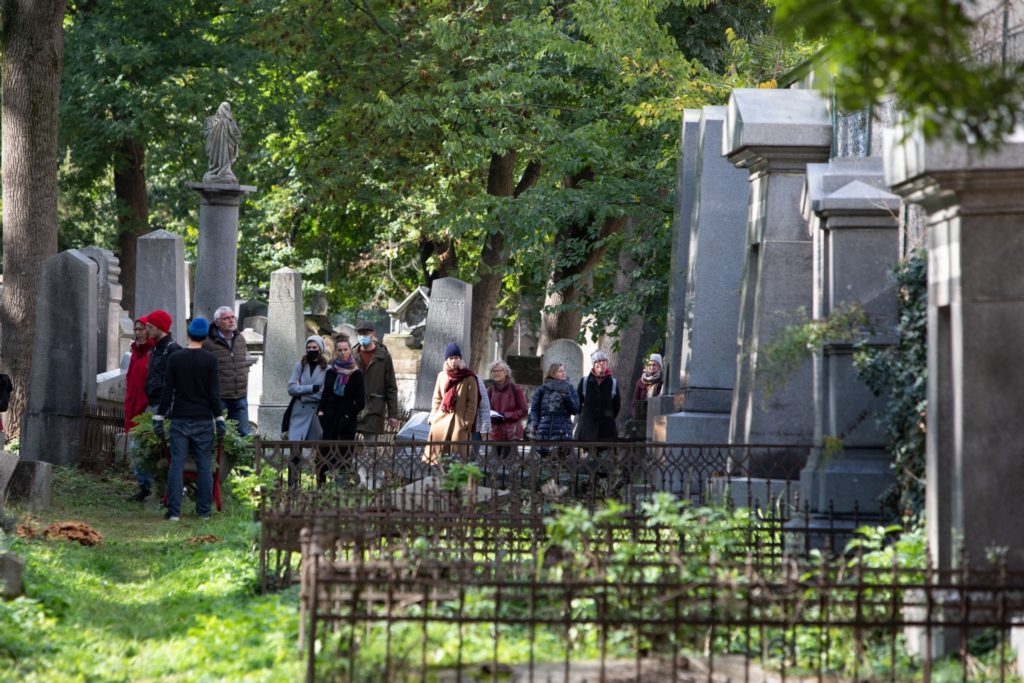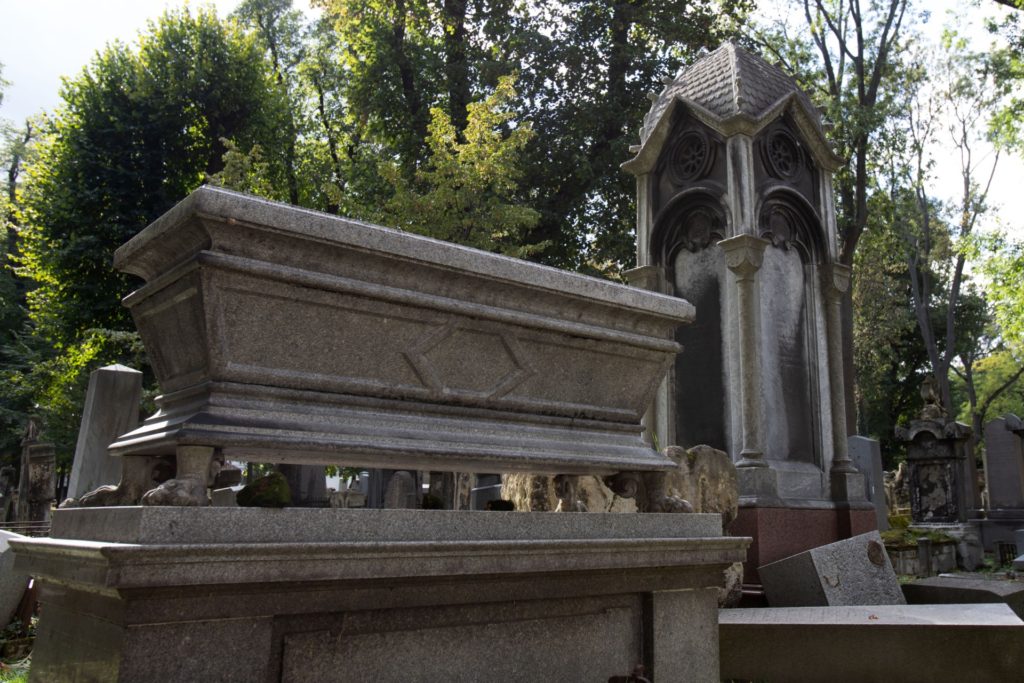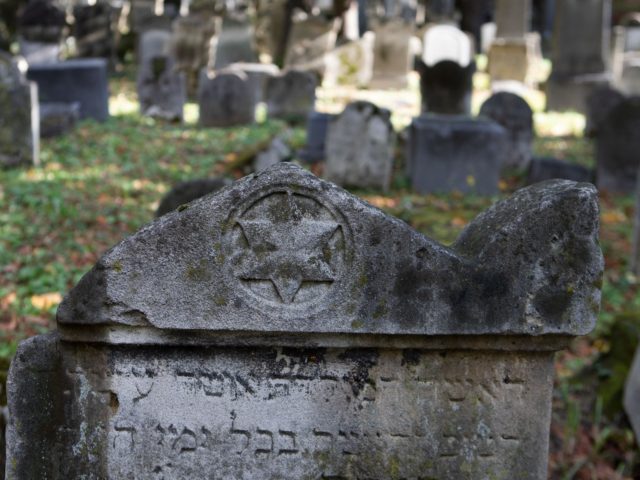Vienna (AFP) — “It might sound strange but when I came here for the first time… I fell in love with this place,” says Jennifer Kickert, spokeswoman for an association striving to clean up a long-neglected Jewish cemetery in Vienna’s north-eastern suburbs.
As russet-coloured leaves fall gently past Kickert on a beautiful autumn day in the Waehring cemetery, it’s easy to see what prompted her enchantment on that first visit ten years ago.
In operation between 1784 and the late 19th century, the artfully carved tombstones and prominence of the people buried in the cemetery make it a “cultural and historical jewel” according to Ariel Muzicant, former president of Vienna’s Jewish community organisation IKG.
But until recently this reminder of Vienna’s imperial heyday had been hidden under dense layers of vegetation, with the graves being abandoned to nature.
The cemetery has suffered from decades of neglect and vandalism — including desecration under the Nazis — but in recent weeks there has been fresh official support for painstaking restoration efforts undertaken here in the past few years.
A recent visit from Austrian President Alexander Van der Bellen was followed by one from Green party Vice-Chancellor Werner Kogler earlier this month, who promised 200,000 euros ($236,000) of federal funding to help with the cleanup efforts.
– ‘Stones telling stories’ –
In 2017 Green local councillor Kickert helped found the “Save the Jewish Cemetery in Waehring” association, which has helped co-ordinate volunteers work at the site.
They intensified earlier restorations, clearing away the undergrowth that had taken up residence among the weather-beaten plots and carefully removing superficial dirt from the stones.
As a result the cemetery is now open for tours one Sunday every month as the volunteers go about their work in the background, their wheelbarrows piled high with branches.
“When you work on a grave, clean it and cut away the plants, the stones begin to tell their stories,” says tour guide Brigitte Kenscha-Mautner.
Some of the prominent names on those stones — Epstein, Arnstein, Ephrussi — need no introduction to those familiar with Viennese history.

A group of visitors take part in a tour at the old Waehring Jewish cemetery in Vienna. The Waehring cemetery has suffered from decades of neglect and vandalism — including desecration under the Nazis — but in recent weeks there has been fresh official support for painstaking restoration efforts undertaken here in recent years. (ALEX HALADA/AFP via Getty Images)
As Kickert says: “The most exciting thing about this place is that the people buried here helped build Vienna as we know it today.”
Many of them helped finance the transformation that Vienna underwent in the mid-19th Century, with the building of the capital’s world-famous Ringstrasse boulevard, and had their own splendid residences along that same road.
The art and architecture of the time also has echoes here, with some stones sporting Biedermeier and neo-Gothic touches while others with more Oriental influence mark the gravesites of Sephardic members of the community.
Some of the women buried in Waehring, such as Fanny von Arnstein, hosted some of Vienna’s most celebrated salons, where diplomats, artists and politicians rubbed shoulders.
– Erased from the map –
In the Nazi era, the site was taken over by the city authorities as persecution of the Jewish population intensified.
The remains of more than 400 people were dug up for a pseudo-scientific “study” on the Jewish race by researchers at the city’s Natural History Museum.
Of those only around half could be recovered after the war, according to historian Tina Walzer, one of the first to raise the plight of the site in the 2000s.
A further 2,000 graves were destroyed in order to make room for a planned air raid shelter which was never completed.
After the war, despite an agreement that that part of the site would be maintained as a green space, the city built an apartment block on it.
As for rest of the plot, Walzer says its post-war fate is a microcosm of Austria’s relationship with its own history.
“Excuses developed, strategies as to how one could come to terms with the injustices committed,” she says.
She cites the fact that the site simply disappeared from city maps as well as a popular local rumour that it had been given protected status for bird conservation.

The Waehring cemetery has suffered from decades of neglect and vandalism — including desecration under the Nazis — but in recent weeks there has been fresh official support for painstaking restoration efforts undertaken here in recent years. (ALEX HALADA/AFP via Getty)
The belated reappraisal of Austria’s history in recent decades has encouraged a new relationship with sites like Waehring.
In 2009 the government approved a total of 20 million euros to restore the country’s Jewish cemeteries, of which just over a million euros ($1.1 million) has been spent in Waehring on preliminary work.
While some pebbles left by visitors can be spotted on the gravestones — a traditional Jewish mark of respect for the dead — most of the descendants of those buried there either perished in the Holocaust or are now outside Austria.
Juergen Kreuzroither, a 52-year-old volunteer who lives locally, says that “obviously it has to do with the history of a country, I feel I have a duty”.
“Mostly there is no-one left to look after these graves, so in that case we have to do it.”

COMMENTS
Please let us know if you're having issues with commenting.